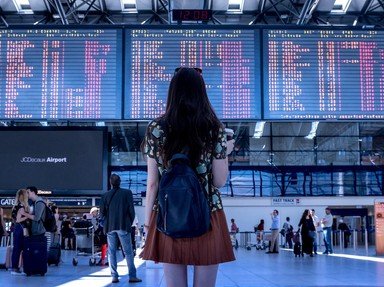Quiz Answer Key and Fun Facts
1. Like many notable carriers, Pan Am began in the 1920s with a single route, linking a United States airport with one in which other American country?
2. Three seaplanes purchased in 1931 were the first to have a specific word in their name which became the airline's callsign and almost synonymous with the airline itself. What was this word?
3. From 1952, Pan Am operated two different scheduled services between New York and London, called Rainbow and President, with the Rainbow service making use of the just recently acquired Douglas DC-6B. What distinguished these services?
4. Pan Am also had some ideas for groundbreaking ground installations (pun intended). Among them was the Worldport. What was that?
5. Another Pan Am innovation of the early 1960s was the PANAMAC. What was it?
6. Among all the aircraft types flown by Pan Am, none represents the carrier as well as the one that made its maiden passenger voyage on January 22, 1970 from New York to London. Which iconic plane, still in production almost fifty years later, was this?
7. Even an airline with a very good safety record will sooner or later experience disaster, and it struck for Pan Am on March 27, 1977, with the Tenerife airport crash, a runway collision between a Pan Am and a KLM jet claiming 583 lives. Who was ultimately found responsible for the disaster?
8. A Pan Am jet was also the target of one of aviation's most notorious terrorist strikes, with a bomb destroying the plane at cruise altitude and killing 270 people on December 21, 1988. Where did this explosion happen?
9. During the late 1980s and early 1990s, Pan Am's fortune took a downturn from which the airline was not to recover. This culminated in the bankruptcy filing of January 1991. As a result of that filing, most of Pan Am's assets were bought out by another airline - which one?
10. The restructured post-bankruptcy Pan Am, reduced to its 1930s focus on Caribbean and South American routes, would not last long. In fact, it finally ceased operations on December 4, 1991. Its final commercial flight was operated on which route and with which plane?
Source: Author
WesleyCrusher
This quiz was reviewed by FunTrivia editor
stedman before going online.
Any errors found in FunTrivia content are routinely corrected through our feedback system.
